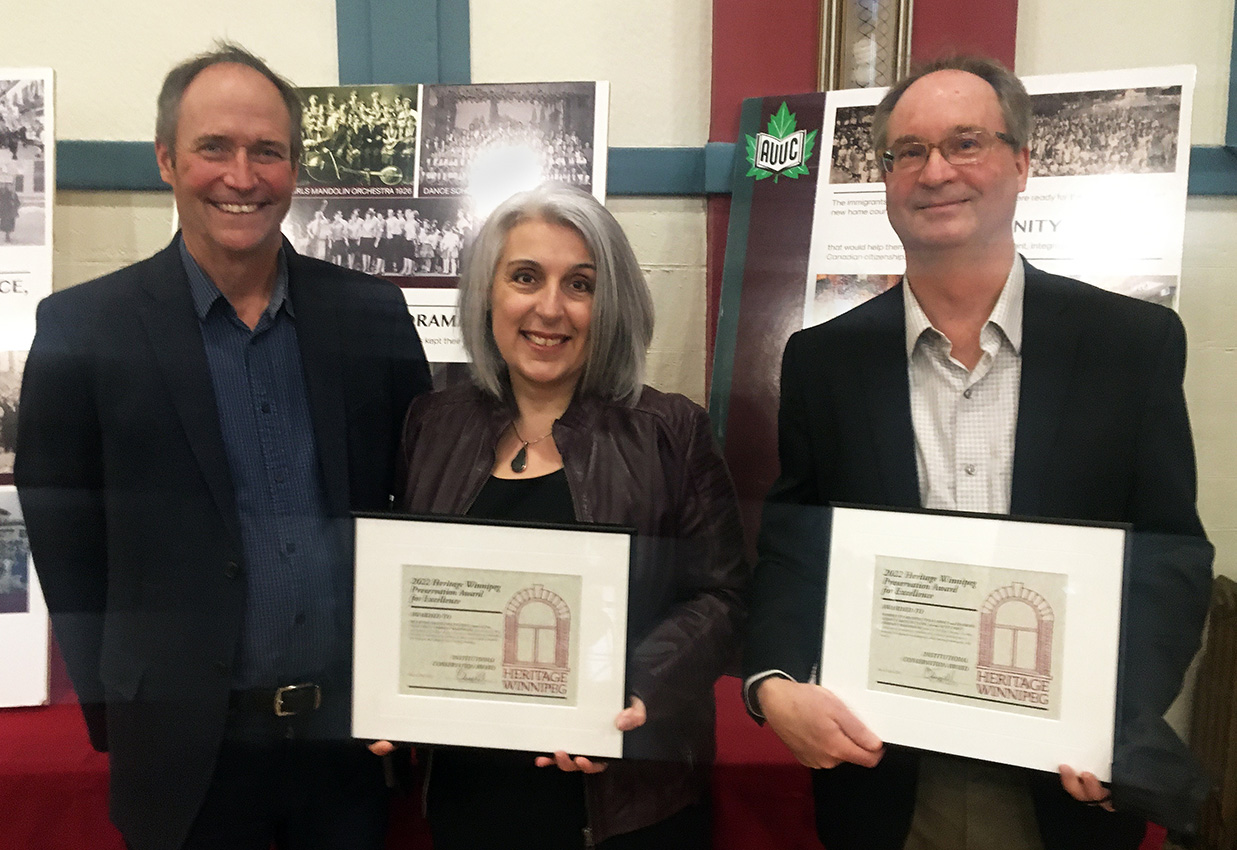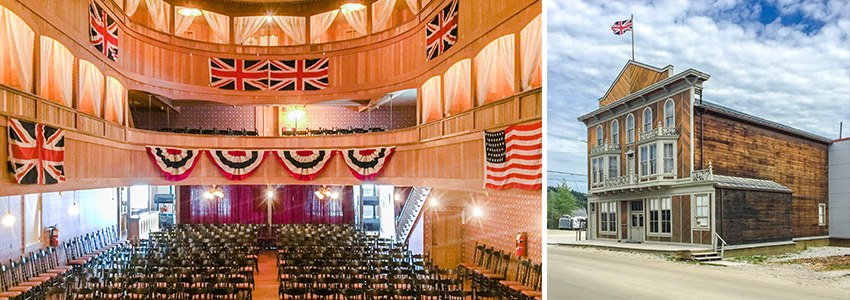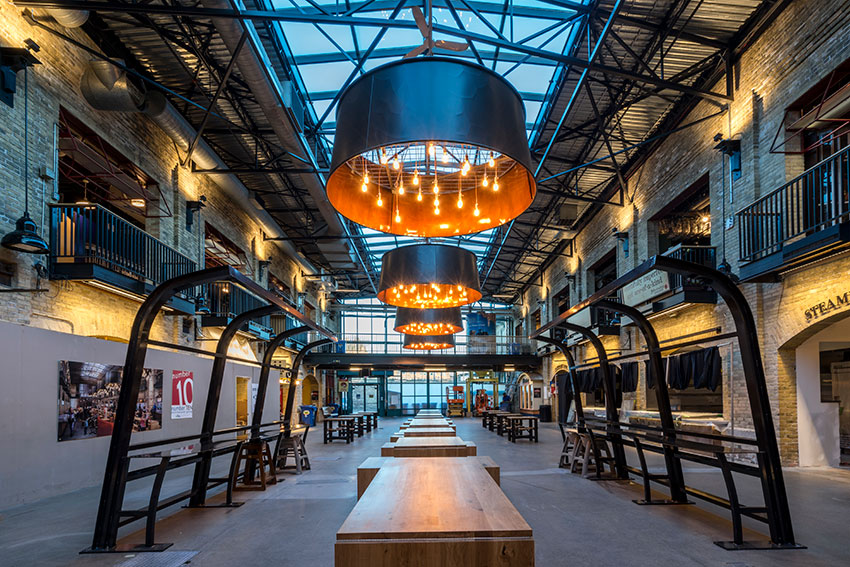The NEW Workplace
- Details
By Genevieve Bergman, Associate
Number TEN’s workplace design team has been hard at work researching post-pandemic work environments and taking a closer look at the transformation from the way things were to an altered, non-corporate landscape.
We have broken down the fundamentals into four parts—FEEL, FORM, FUNCTION & FUTURE—which reveal the trends that are shaping today’s workplaces.

Number TEN Wins Conservation Award From Heritage Winnipeg
- Details
By Ayla Manning, Marketing Content Producer
Number TEN Architectural Group, Diamond Schmitt Architects Inc. and RRC Polytech were awarded an Institutional Conservation Award for their collaboration to sensitively rehabilitate the historic Scott Fruit Company building and maintain its character and integrity while creating dynamic spaces for RRC Polytech students at Manitou a bii Bi daziigae.

Frank Koreman (Akman Construction), Maria Mendes (RRC Polytech), and Doug Hanna (Number TEN Architectural Group) at the 36th Annual Preservation Awards.
World Interiors Day 2022
- Details
By Ayla Manning, Marketing Content Producer
Wood: Pride of the Past and An Incentive for the Future
The World Interiors Day 2022 guiding theme is “Pride of the Past and An Incentive for the Future.” What better subject than wood, an ancient material with enduring popularity, which represents hope for a better future, and provides a tangible connection to the natural world?
Wood is beautiful and versatile in its utility and has been used as a building material for as long as humans have built. Wood is culturally significant: it is the material we turn to when we want to connect more closely to the natural world. Sometimes wood choices are symbolic; sometimes they are based on technical characteristics.
Wood insulates and absorbs sound. It is flexible, lightweight, renewable, and beautiful. We love to see, touch, and use it. Despite the many new and innovative products and materials available to designers, wood has remained perennially popular.
On an individual scale, each piece of wood displays its history in its grain. Environmental conditions and tree variety contribute to the unique grain of each piece. On a broad scale, the use of wood connects us to the past, either through reclaiming techniques or reclaiming materials.
To the Wild West and Back: Palace Grand Theatre Restored in Dawson City
- Details

Where the Klondike and Yukon Rivers meet, Dawson City became a boomtown of fortune-seekers in 1898 during the Klondike Gold Rush. By 1900 the muddy tent city had transformed into a prosperous outpost. The Palace Grand Theatre opened in gala style in July 1899. The theatre was a combination of a luxurious European opera house and boomtown dance hall. It was built by "Arizona Charlie Meadows"; a Wild West showman who came to Dawson City during the Klondike Gold Rush. With the gold strike in Nome, Alaska in the latter part of 1899, the excitement in Dawson City died as quickly as it rose. Over the next few years, Dawson City made the transition from gold rush boomtown to a smaller mining community. With the steady decline in population, Meadows sold the Palace Grand Theatre in 1901 for $17,000, less than a third of the initial cost, and the building was neglected over time.
A new vision for The Forks Market
- Details

By Erin Riediger, Interior Designer
Republished with permission courtesy of Tourism Winnipeg’s Only In The Peg blog.
If you hurried inside to warm your toes after skating Winnipeg’s river trail this winter, you may have noticed changes taking place at The Forks Market. Throughout the winter season, temporary walls have covered much of the central atrium, but now that spring has arrived, the public is finally getting a chance to see behind these walls as a new vision for The Forks Market is taking shape.
In the Spring of 2014 Number TEN Architectural Group was approached by The Forks to revitalize The Forks Market by transforming the central atrium in to a food hall. The food hall concept allows visitors to experience diverse local cuisine in a casual environment. Menu items can be selected from a variety of kiosks and paired with beer and wine.


